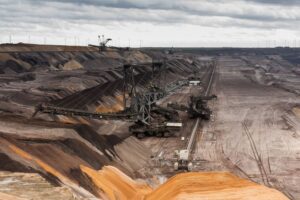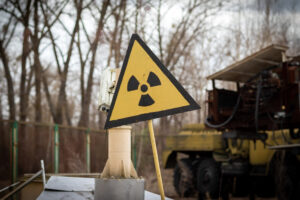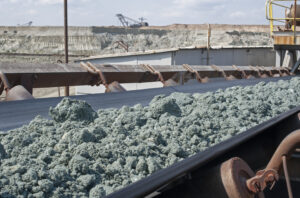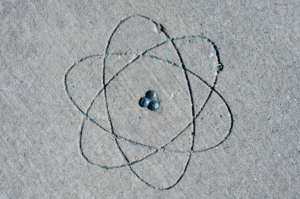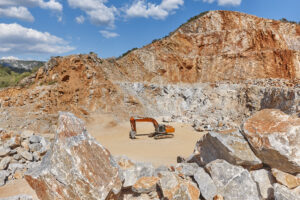Paladin Energy
(ASX: PDN)Share Price and News
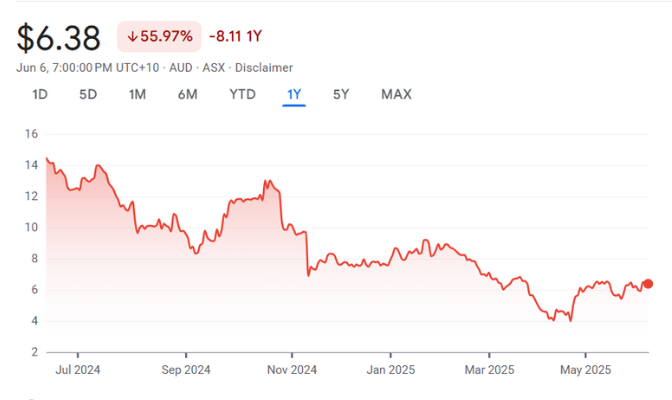
About Paladin Energy
Founded in 1993 and listed on both the ASX and TSX, Paladin Energy has evolved into a leading uranium miner with a global reach. Its flagship asset, the Langer Heinrich Mine (LHM) in Namibia, restarted in March 2024 and proved its resilience despite weather disruptions. Paladin holds a 75% stake in LHM, with the remaining interest owned by China National Nuclear Corporation, following a 2014 divestment.
Beyond Namibia, the company holds multiple high-potential assets across Australia and Canada, most notably the Patterson Lake South (PLS) project in Saskatchewan and exploration sites in Newfoundland. With strong offtake agreements and a clear focus on enabling nuclear energy, Paladin aims to establish itself as a key supplier of yellowcake to utilities around the world.
PDN Company History
Paladin opened the Langer Heinrich Mine in 2007 and achieved full commercial production the following year. However, the uranium price crash and high debt burden during the late 2010s forced the company to place LHM on care and maintenance in 2018 and enter a debt-for-equity swap.
A turnaround began under new leadership, with disciplined operations leading to the restart of LHM in March 2024. In mid-2024, Paladin announced a C$1.14 billion all-scrip takeover of Fission Uranium, gaining full control of the high-grade PLS project. The deal was approved under Canada's Investment Canada Act in December, with conditions designed to exclude Chinese funding and limit exports to China beyond existing agreements.
Future Outlook of Paladin Energy (ASX: PDN)
In the short term, Paladin’s focus remains on driving production at Langer Heinrich. In the March 2025 quarter, the mine achieved its best performance since restarting, producing approximately 745,000 lb U₃O₈—a 17% rise from the previous quarter, while sales volumes reached about 872,000 lb at realised prices averaging around US$70 per pound.
This performance has bolstered confidence in its operational ramp-up and revenue generation. Financially, Paladin reported unrestricted cash reserves of US$127.8 million and retains a US$50 million undrawn debt facility, enabling early debt repayment and supporting upcoming capital needs. Strategically, the acquisition of the PLS project positions Paladin to launch production in Canada by around 2029, complementing its growing presence in Australia and Namibia.
Analysts forecast that by the decade’s end, Paladin could produce up to a combined 15 million pounds annually across both sites, an increase from current levels, supported by disciplined financing and strong utility partnerships. Key structural support comes from uranium’s outlook: prices have nearly tripled over the past three years amid a supply squeeze and a global pivot to nuclear energy.
While high-cost producers may return to market at these price levels, Paladin’s diversified asset model leaves it well-positioned. Still, investors should consider risks: uranium remains a cyclical commodity; the execution of the PLS project will require significant capital; and weather-related disruptions at LHM remain an ongoing issue. Management appears focused and cautious, wisely balancing growth with financial resilience.
Is PDN a Good Stock to Buy?
Investors seeking uranium exposure could find Paladin compelling. The Langer Heinrich mine is already back in production, generating cash and showing operational maturity. Paladin’s solid cash reserves, alongside disciplined debt management, strengthen its financial foundation even as it readies itself for the Canadian growth chapter.
The addition of the PLS project significantly enhances Paladin’s long-term upside, thanks to its high-grade resource and location in the Athabasca Basin. However, it’s not without challenges. Uranium prices remain vulnerable to macroeconomic shifts, nuclear policy changes, and competitive pressures.
The financing, execution, and timing of the PLS project will be critical; any delays or overspend could dampen investor sentiment. Regulatory oversight, especially concerning foreign capital and export controls, is also a factor to monitor. On balance, PDN sits at a pivotal point. It already generates revenue and could evolve into a multi-jurisdictional uranium powerhouse.
For investors comfortable with commodity cyclicality and development execution risk, Paladin offers a blended mix of short-term operational yield and long-term growth potential. That said, close attention to cash flow, uranium markets, and project milestones will be key.
Our Stock Analysis
Paladin Energy vs Boss Energy: Which ASX Uranium Producer to Buy?
Boss Energy (ASX: BOE) and Paladin Energy (ASX: PDN) represent Australia’s two largest uranium producers, yet their recent trajectories couldn’t…
Paladin Energy Jumps 7% on Record Uranium Production and $300M Funding Boost
Paladin Energy Rallies on Record Uranium Output and Strengthened Balance Sheet Paladin Energy (ASX: PDN) caught investors’ attention this morning,…
Paladin Energy (ASX:PDN) Jumps 10% as Revenue Surges Past A$177M
Paladin Energy (ASX: PDN) Surges as Uranium Producer Era Begins Paladin Energy (ASX: PDN) gave investors reason to cheer as…
ASX Uranium Stocks: Best 3 Picks for the Long-Term
Not all commodities are created equal. Gold has long been the world’s safe haven, lithium has become the lifeblood of…
Paladin Energy (ASX:PDN): This A$3.5bn uranium developer is set to benefit from the Surge Towards a Nuclear Future
Paladin Energy (ASX: PDN) is one of several uranium stocks that saw an upswing in 2023 – by over 50%…
Frequently Asked Questions
Paladin does not currently pay dividends, opting to reinvest earnings in ramp-up and development projects, especially in Canada and Canada-related assets.
